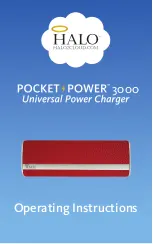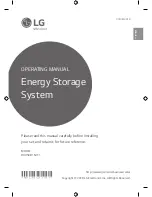
GB
22
C30 Li | TC30 Li
Disposal
These statements only apply to appliances that
are installed and sold in the countries of the
European Union and are subject to European Dir-
ective 2012/19/EU. Different provisions may ap-
ply to the disposal of electrical and electronic ap-
pliances in countries outside the European
Union.
Information on German Battery Act (BattG)
■
Used batteries and rechargeable bat-
teries do not belong in household
waste, but should be collected and dis-
posed of separately.
■
For safe removal of batteries or re-
chargeable batteries from the electrical
appliance and for information on their
type or chemical system, follow the fur-
ther information within the operating or
installation instructions.
■
Owners or users of batteries and re-
chargeable batteries are obliged by law
to return them after use. The return is
limited to the handover of customary
household quantities.
Used batteries can contain harmful substances or
heavy metals that can cause damage to the en-
vironment and human health. Reuse of the used
batteries and use of the resources contained
therein contributes to the protection of these two
essential commodities.
The symbol of the crossed-through rubbish bin
means that batteries and rechargeable batteries
may not be disposed of in household rubbish.
In addition, if the symbol Hg, Cd or Pb appears
under the rubbish bin, this stands for the follow-
ing:
■
Hg: Battery contains more than 0.0005 %
mercury
■
Cd: Battery contains more than 0.002 % cad-
mium
■
Pb: Battery contains more than 0.004 % lead
Rechargeable batteries and batteries can be
handed in at the following places at no charge:
■
Public service disposal or collection points
(e.g. municipal building yards)
■
Points of sale of batteries and rechargeable
batteries
■
Disposal points of the common take-back
system for the used batteries of appliances
■
Disposal point of the manufacturer (if not a
member of the common take-back system)
These statements apply only to rechargeable bat-
teries and batteries that are sold in the countries
of the European Union and that are subject to
European Directive 2006/66/EU. Different provi-
sions can apply to the disposal of rechargeable
batteries and batteries in countries outside the
European Union.
Summary of Contents for 113560
Page 3: ...442230_a 3 01 1 3 4 02 03 4 2 3 1 5 4 3 1 2 2...
Page 207: ...442230_a 207 1 1 1 2 C30 Li TC30 Li 113559 B50 Li EN 62133 ABP118L25 2 1...
Page 208: ...RU 208 C30 Li TC30 Li 2 2 2 3 C30 Li 01 01 1 01 2 01 3 01 4 TC30 Li 02 02 1 02 2 02 3 02 4 3...
Page 209: ...442230_a 209...
Page 210: ...RU 210 C30 Li TC30 Li AL KO...
Page 211: ...442230_a 211 4 1 2 3 5 5 1...
Page 213: ...442230_a 213 03 4 5 3 TC30 Li TC30 Li 02 1 02 4 6 0 25 C 40 60 3 7...
Page 214: ...RU 214 C30 Li TC30 Li 2012 19 EC Hg Cd Pb Hg 0 0005 Cd 0 002 Pb 0 004 2006 66 EC...
Page 215: ...442230_a 215 8 C30 Li TC30 Li AL KO AL KO AL KO C30 Li TC30 Li...
Page 219: ...442230_a 219 1 1 1 2 C30 Li TC30 Li 113559 B50 Li EN 62133 ABP118L25 2 1...
Page 220: ...UA 220 C30 Li TC30 Li 2 2 2 3 C30 Li 01 01 1 01 2 01 3 01 4 TC30 Li 02 02 1 02 2 02 3 02 4 3...
Page 221: ...442230_a 221...
Page 222: ...UA 222 C30 Li TC30 Li AL KO...
Page 223: ...442230_a 223 4...
Page 225: ...442230_a 225 03 4 5 2 2 TC30 Li 03 4 5 3 TC30 Li TC30 Li 02 1 02 4 6 0 25 C 40 60 3...
Page 227: ...442230_a 227 8 C30 Li TC30 Li AL KO AL KO AL KO C30 Li TC30 Li...
Page 230: ...230 C30 Li TC30 Li...
Page 231: ...442230_a 231...
















































